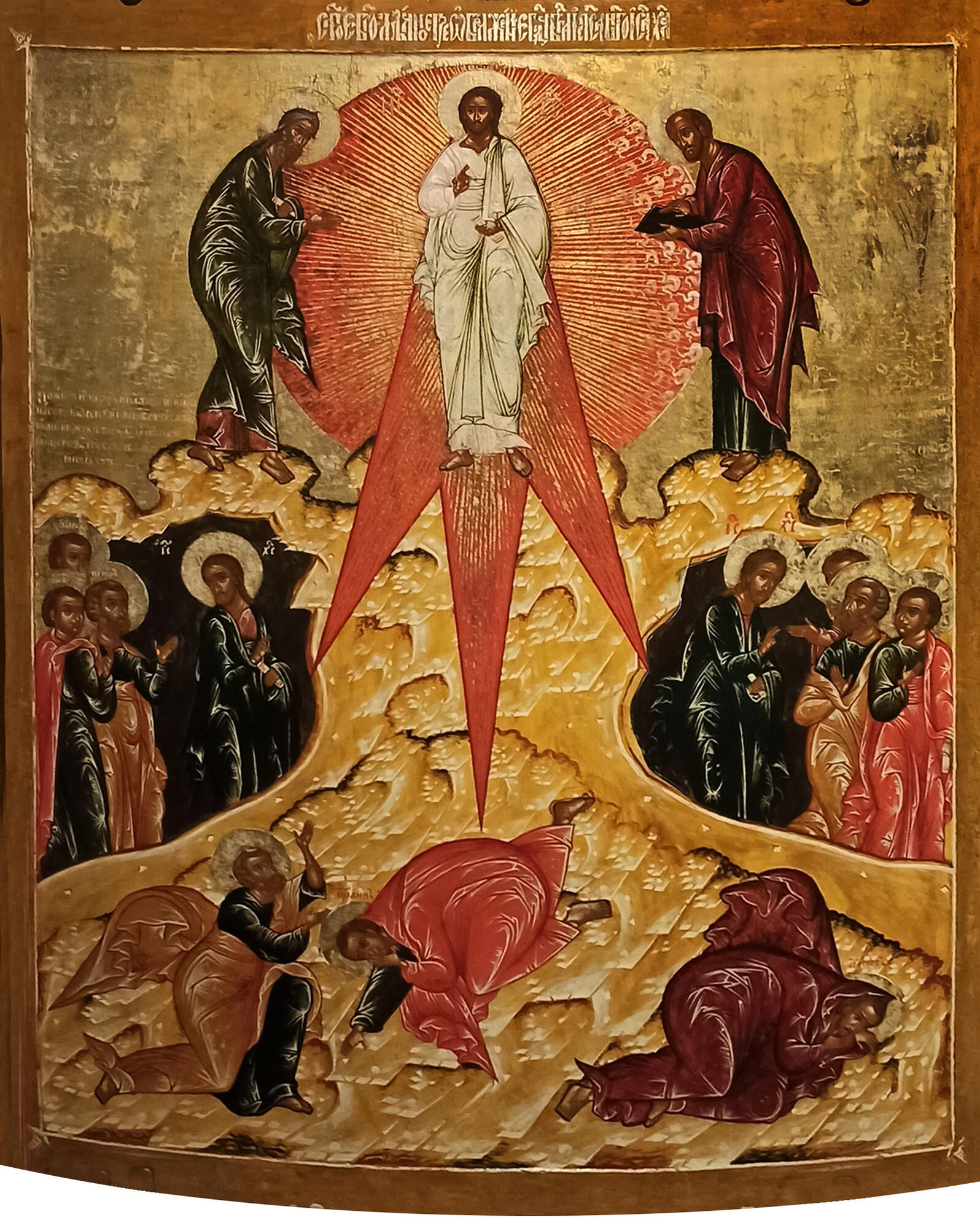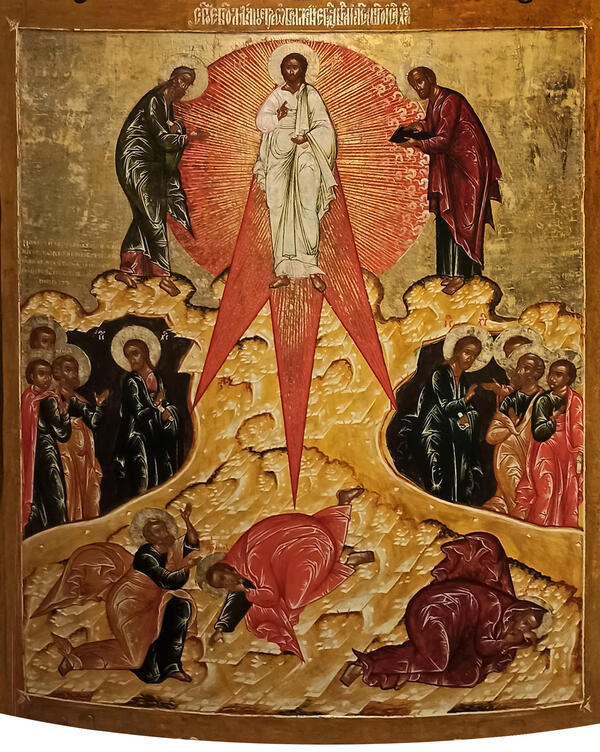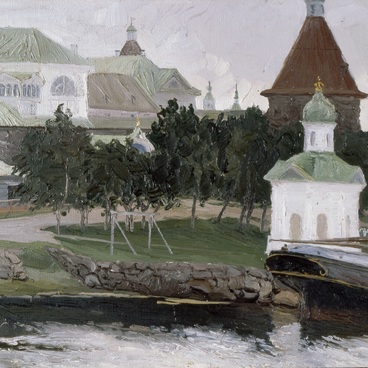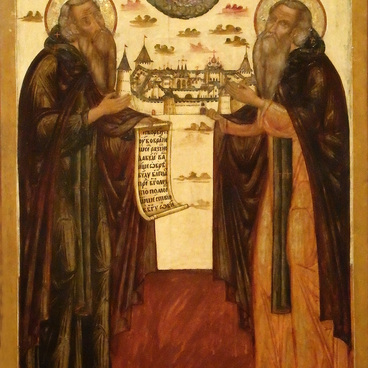The icon represents a Biblical scene about Jesus revealing his divine nature to his disciples. He led Peter, James and John to Mount Tabor and ‘was transfigured before them. His face shone like the sun, and his clothes became as white as the light. Just then there appeared before them Moses and Elijah, talking with Jesus. (Matthew 17: 2-3)
Seeing that, the disciples “fell facedown to the ground, terrified.” (Matthew 17:6) A voice from a cloud referred to Jesus as son and commanded the disciples to obey him. “As they were coming down the mountain, Jesus instructed them, “Don”t tell anyone what you have seen, until the Son of Man has been raised from the dead.”’ (Matthew 17:19)
In the picture, Jesus is standing on a mountain, wearing white clothes and a halo of glory rendered as red and golden gleams. His right hand is raised in a gesture of blessing. The prophets Elijah and Moses are standing to the left and to the left of him, respectively. They are leaning towards the Saviour, talking to him. The apostles Peter, James and John, who have witnessed the Transfiguration, are lying on the ground, venerating Jesus. In the background, a mountainous landscape is seen, as the scene is happening on Mount Tabor.
In Russia, the Feast of the Transfiguration is celebrated on the 19th of August. It is popularly called Apple Feast of the Saviour, or Apple Spas, because traditionally this day apple harvesting began in Central Russia. Artists who lived in coastal villages and settlements were commissioned by the Solovetsky monastery to paint icons. Moreover, the monastery provided the artists with paints and painting templates. The monastery owned a large territory on the White Sea coast, its lands stretching from Arkhangelsk to the Kola Peninsula. For the peasants, painting provided additional income apart from fishing and farming.
It is not by accident that you can observe the Transfiguration icon in this room. First, Alexander Alexeyevich Borisov, who gave his name to the Art Museum of the Arctic exploration, was studying in a painting workshop in the Solovetsky monastery. For the young artist, it was a kind of transfiguration: he was transforming his skills and himself. Moreover, the full name of the monastery is Solovetsky Transfiguration Monastery, in name of its principal church, the Transfiguration Cathedral.
Seeing that, the disciples “fell facedown to the ground, terrified.” (Matthew 17:6) A voice from a cloud referred to Jesus as son and commanded the disciples to obey him. “As they were coming down the mountain, Jesus instructed them, “Don”t tell anyone what you have seen, until the Son of Man has been raised from the dead.”’ (Matthew 17:19)
In the picture, Jesus is standing on a mountain, wearing white clothes and a halo of glory rendered as red and golden gleams. His right hand is raised in a gesture of blessing. The prophets Elijah and Moses are standing to the left and to the left of him, respectively. They are leaning towards the Saviour, talking to him. The apostles Peter, James and John, who have witnessed the Transfiguration, are lying on the ground, venerating Jesus. In the background, a mountainous landscape is seen, as the scene is happening on Mount Tabor.
In Russia, the Feast of the Transfiguration is celebrated on the 19th of August. It is popularly called Apple Feast of the Saviour, or Apple Spas, because traditionally this day apple harvesting began in Central Russia. Artists who lived in coastal villages and settlements were commissioned by the Solovetsky monastery to paint icons. Moreover, the monastery provided the artists with paints and painting templates. The monastery owned a large territory on the White Sea coast, its lands stretching from Arkhangelsk to the Kola Peninsula. For the peasants, painting provided additional income apart from fishing and farming.
It is not by accident that you can observe the Transfiguration icon in this room. First, Alexander Alexeyevich Borisov, who gave his name to the Art Museum of the Arctic exploration, was studying in a painting workshop in the Solovetsky monastery. For the young artist, it was a kind of transfiguration: he was transforming his skills and himself. Moreover, the full name of the monastery is Solovetsky Transfiguration Monastery, in name of its principal church, the Transfiguration Cathedral.



